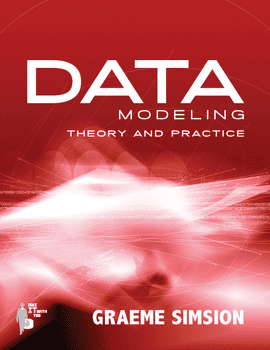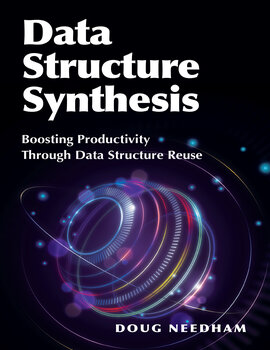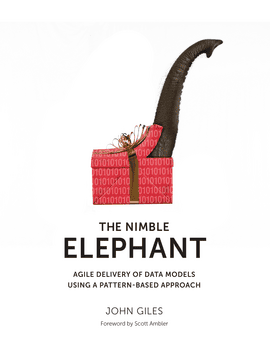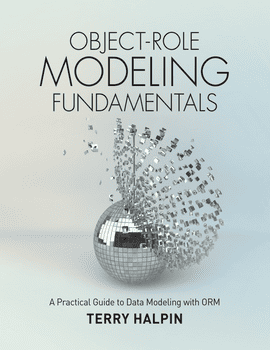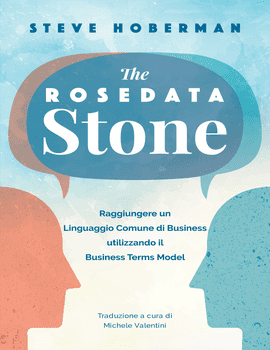Data Modeling Theory and Practice
Data Modeling Theory and Practice, by Graeme Simsion
Graeme Simsion, author of several bestsellers including The Rosie Project, provides a detailed review of the extensive literature on data modeling and logical database design, referencing nearly 500 publications, with a strong focus on their relevance to practice.
Topics
Part I – Introduction
Chapter 1 Introduction
The starting point
Conflicting views
Importance of the distinction
Clarifying the question
Overview of research design
Organization of the book
Part II – Theory
Chapter 2 Definitions of design and data modeling
Design in information systems
Definitions of design
Definitions of data modeling
Chapter 3 Beliefs about the database design process
A model of the database design process
Interaction with the UoD
Requirements analysis
Conceptual data modeling
View integration
Logical data modeling
Physical database design
External schema specification
Process modeling
Beliefs from end-to-end
Chapter 4 Comparison with Lawson’s model
Lawson’s characteristics of design
Problem
Process
Product
Summary and review
Chapter 5 Studies of human factors in data modeling
The gold standard
Industry participation
Problem complexity
Focus of the studies
Generalizing the findings
Summary
Chapter 6 What the thought-leaders think
Introduction
Design and method
Participants
Results
Discussion
Part III – Practice
Chapter 7 Research design
Introduction
Research question and sub-questions
Research design – overview
Data collection and management
Use of statistics
Participants
Chapter 8 Scope and stages
Introduction
Research design
Measures
The Scope and Stages questionnaire
Method
Sample
Results
Discussion and conclusions
Chapter 9 How practitioners describe data modeling
Introduction and objectives
Research design
Method
Sample
Results
Discussion
Chapter 10 Characteristics of data modeling
Introduction and objectives
Research design
Measures
The Characteristics of Design questionnaire
Method
Samples
Results
Analysis by property
Discussion and conclusions
Chapter 11 Diversity in conceptual data modeling
Objectives and approach
Research design
Measures
Materials
Method
Samples
Results
Coda: The real-world solution
Discussion
Chapter 12 Diversity in logical data modeling
Objectives and approach
Research design
Assessment of diversity
Materials
Method
Samples
Results
Discussion
Chapter 13 Style in data modeling
Objectives and approach
Research design: An indicator of style
Measures
Materials
Method
Samples
Results
Discussion
Part IV – Synthesis and conclusions
Chapter 14 Synthesis and conclusions
Introduction
Answering the sub-questions
An alternative perspective
Generalizing the findings
Implications
Research directions
DATA MODELING THEORY AND PRACTICE is for practitioners and academics who have learned the conventions and rules of data modeling and are looking for a deeper understanding of the discipline. The coverage of theory includes a detailed review of the extensive literature on data modeling and logical database design, referencing nearly 500 publications, with a strong focus on their relevance to practice. The practice component incorporates the largest-ever study of data modeling practitioners, involving over 450 participants in interviews, surveys and data modeling tasks. The results challenge many longstanding held assumptions about data modeling and will be of interest to academics and practitioners alike.
Graeme Simsion brings to the book the practical perspective and intellectual clarity that have made his Data Modeling Essentials a classic in the field. He begins with a question about the nature of data modeling (design or description), and uses it to illuminate such issues as the definition of data modeling, its philosophical underpinnings, inputs and deliverables, the necessary behaviors and skills, the role of creativity, product diversity, quality measures, personal styles, and the differences between experts and novices.
Data Modeling Theory and Practice is essential reading for anyone involved in data modeling practice, research, or teaching.
About graeme
Graeme Simsion, author of several bestsellers including The Rosie Project, provides a detailed review of the extensive literature on data modeling and logical database design, referencing nearly 500 publications, with a strong focus on their relevance to practice.
Faculty may request complimentary digital desk copies
Please complete all fields.
